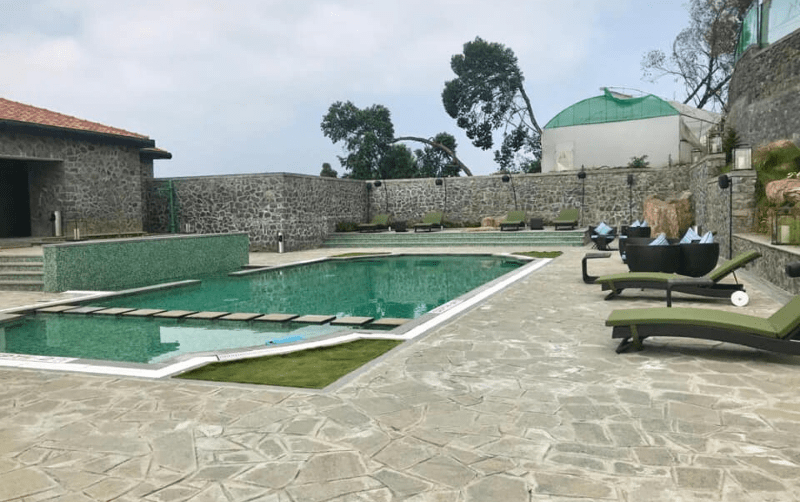The Kurinji flower that blooms once in 12 years flowered at the time that I was in the Kodai hills. It was sheer magic to see the mass flowering providing a feast for the butterflies, honeybees and other insects. Kodaikanal, referred to as the ‘Gift of the Forests’ in Tamil Nadu, is situated at 6,998ft above sea level. The hill station’s sheer beauty makes it amply clear why the British set up base here and invited the others like the Swedes and Germans to do the same.

My choice of abode for a rejuvenating mountain getaway was clearly the Tamara Kodai, a hotel that has made its ecological imprint minimal, but still provides luxury in a heritage experience. They even have a rain-harvesting facility. In the 1840s, it was called the Baynes Bungalow belonging to a British district judge, who sold it to a Father Loius Cyr in 1860, which explains the three-monk sculpture at the entrance to welcome you to what is now the Tamara Kodai, coupled with cardamom garlands and chukku coffee.

Kodai is famous for its cool weather all year around, and being surrounded by green forests, its winters are portrayed as fireside picture postcards. Unwinding in a 450-square-feet suite comprising a colonial-style sitting area and a cozy bedroom opening out into a balcony with a distant view of the Shola mountains proves to be a sheer visual delight.

The hotel’s offerings at the Bistro 1845 consist of an unexpectedly exotic meal with asparagus, roasted garlic, almond flakes and broccoli broth, followed up with smoked salmon with sautéed vegetables.

The next morning I headed to the small Sri Kurinji Andavar Temple, built in 1936. Legend has it that a European woman (Lady Leelavati) married Sir Ponambala Ramanathan, and converted to Hinduism before she built this temple. Tourists flock here in the summer to take blessings from Lord Murugan.

Kodaikanal has quite a few churches as well. The Christ the King Church near Coaker’s Walk has a rather Goth appearance, built as it is completely in granite. The 100-year-old La Saleth Catholic Church is situated on a cliff with fantastic views gracing the ascent.

Kodaikanal evenings are best for heritage guided walks, reliving the hill station’s rich history, Cycling on mountain bikes discovering scenic paths grants one a dose of the most refreshing air. One can also simply amble along the one-kilometre Coaker’s Walk (which dates back to 1872), and move right on to the star-shaped manmade Kodaikanal Lake, around which are built a boathouse, boat club and a public ferry. The spectacular sunsets here are not to be missed.

Back at the Tamara, head to the Elevation Spa to soothe tired minds and bodies, or take a dip in the temperature-controlled pool. A cozy afternoon can also be spent sinking into the comfortable leather chairs in the library above the La Providence restaurant, and if you have company, try out snooker or some board games.

A morning drive into the rambling hillocks takes one into the wonderful sheep farms of the Sheep and Wool Research Centre. The Gundaar forests house the Gundar Falls merely 15 kilometres away from Kodaikanal.

Visiting the Berijam Lake, a freshwater reservoir, is a lesson in history: Sir Vere Levigne, the then collector of Madurai, artificially created the dam in 1864 with sluice outlets; it was one of several transit camps built for soldiers. A military outpost, Fort Hamilton, came along later.

As you drive on into the Palani Hills Wildlife Sanctuary through winding roads on your adventure, you will stumble upon the Kodai Solar Observatory built in 1901. Next come pine forests planted in the early 20th century.

One cannot leave Kodaikanal without visiting a little village seven kilometres away from Kodai called Vattanakal that Israelis throng to (this explains the term ‘Little Israel’). Devoid of pollution, it offers nature’s bounty that is not to be found elsewhere, including magic mushrooms. Visit Altaf’s Café and the waterfalls before you head back to the warmth of the Tamara Kodai.

Image credits : Maya Lalchandani
Previously published in eShe
https://issuu.com/eshemagazine/docs/eshe_february_2020/40



